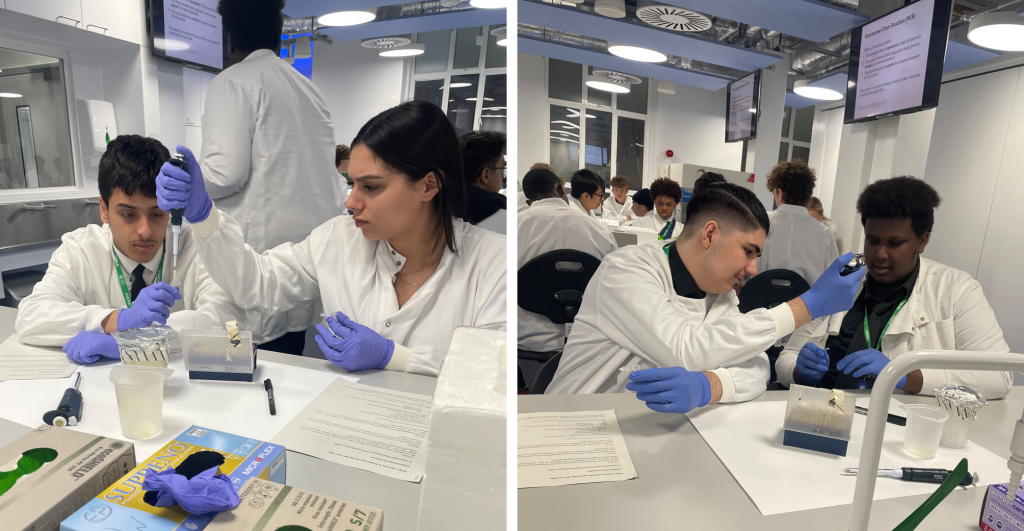With the recent lifting of COVID19 restrictions, Matt Rogers and I were finally able to run our two-day summer research experience workshop for the first time since 2018!
On 28th and 29th June we joined by three groups of enthusiastic Y11 and Y12 students and their teachers from St Thomas the Apostle School, Dulwich College and Skinners Academy for two days of ‘molecules, parasites and vectors’. The students got to have a go at restriction mapping, PCR, sandfly dissection, just a few of the approaches that Matt and I use in our research.
We were also joined by a group of enthusiastic LSHTM PhD students, technicians and academics, who shared some of their research experiences and provided invaluable assistance throughout the two days. Big thanks to Amy and Cheryl for setting everything up, to Martin, Rob, Luke, Ailie and Tom for your fascinating talks, to Patricia, Rhodri and Luke for the insectory tours, and finally to Tom and Mojca for a great practical on mosquito spit!!
It was an intense but fun couple of days, and from the feedback received so far, the students seemed to enjoy it too!
A few comments from the teachers after the session…
…thanks to all who were involved in the two days – it was an amazing experience for the students
…they really appreciated seeing how research works, and how much of it is based on collaboration between groups
…seeing the hands-on work that needs to be done, then hearing about the contribution the work makes to the development of control, treatment or diagnosis of disease helps them see the big picture
…they should now be whizzes at restriction mapping when we study it next year
…they were really proud of being able to dissect the sandflies!
We’re looking forward to welcoming another group of students to LSHTM in June 2023!

